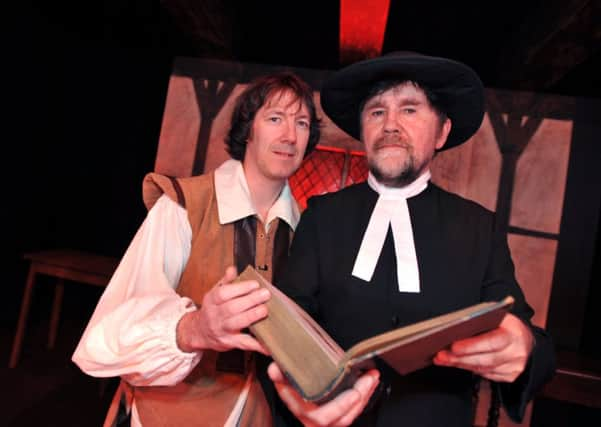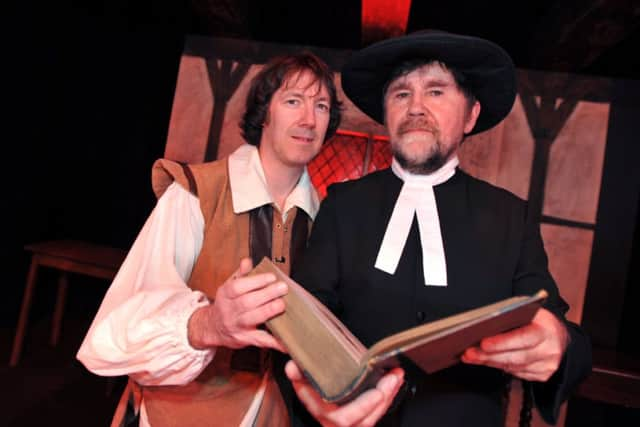Review: ‘The Crucible’, by The Garrick


Set in the Puritan town of Salem, Massachusetts, in 1692, this allegorical drama depicts the tragic downfall of several townsfolk falsely accused of witchcraft. Abigail Williams, fuelled by jealousy and revenge, accuses her former lover’s wife, Elizabeth Proctor, of sorcery, manipulating the town’s fear of the unknown. This anxiety, perpetuated by the black-and-white ideals of Puritanism, allows for mass hysteria.
Sinister music opened the play while the staging, a bleak home/court room, reflected the austerity of Puritan life, devoid of individualism, with both depicting a town governed by plots and repression.
Advertisement
Hide AdAdvertisement
Hide AdThe play, written in 1953, parallels the witch-hunts of 1950s America, when politicians led by Joseph McCarthy sought to remove Communists from positions of influence. Like his characters, Miller, a Jewish man of Polish descent, lived in a “crucible”. Betrayed by a friend during the witch-hunts, his vision of America as a place of freedom and tolerance began to unravel.


Powerful performances in the show came from Martin Chadwick and Lynne Atkinson, as Mr and Mrs Putnam, a couple surviving seven of their eight children, with Atkinson delivering a startling portrayal of a woman crazed by bereavement. The actress drew out, to chilling effect, the ironies of a character so fearful that uncontrollable forces govern life she thirsts for the existence of witchcraft, which man, paradoxically, is able to manage.
Meanwhile, John Cummings’ displayed great skill in depicting the paranoia, resentment and anxiety of the Rev. Parris towards the community’s landowners and irregular church-goers. The actor effectively captured the idea that, as Miller says in his own words, “the secret alligiences of the alienated heart” posed a threat to the “theocratic mind and its quarry”. Cummings gave a formidable performance of a man willing to abuse both the town’s hysteria and Puritan ideology for his own gain.
Likewise, Lizzie Dixon performed an impressive range of traits/emotions as Abigail, from passion to bitterness and from despair to aggression, to depict her manipulative and vengeful nature.
Advertisement
Hide AdAdvertisement
Hide AdSimon Bailey gave a passionate performance as John Proctor, a man forced to choose between integrity and family duty, realising Miller’s aims of raising thought-provoking questions about the relationship between honour and ideology. The anxiety of Elizabeth (depicted convincingly by Andrea Cawley) is all the more moving for John’s unwavering faith, at first, in the triumph of truth.
The production remains true to the play in presenting the characters, as less fearful of witchcraft than of a world where established “truths” can be, and are, broken. Stephen Dixon’s striking performance as the Rev. John Hale, a leader willing to evolve with changing “truths”, only served to add weight to the tragedy of a town ravaged by prejudism.
Director Peter Allan exhibited great skill in revealing the play’s darkest ironies, depicted most powerfully in the Rev. Parris’ comment: “We may open up the boil of all our troubles today!” The Garrick’s production of “The Crucicble” fulfilled Miller’s vision, reminding us that by purging a society of its “otherness” we sustain rather than drain it of its evil, owing to the spread of intolerance.